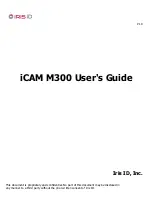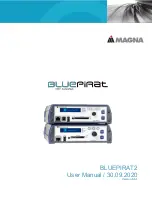
C
HAPTER
5 Y
OUR
F
IRST
P
ROGRAM
: Create a Program
33
UM-0071-A0
5-2
C
REATE
A
P
ROGRAM
Now you’ll use a DeLogger program builder window
to create a simple program ready to send to the
DT800. (You can also create a program in a DeLogger
text window if you’re familiar with the
dataTaker
programming language. But, in this tutorial, we’ll do it
the graphical way — by pointing and clicking in the
program builder.)
The general steps for working in a program builder
window are summarized by the numbered instructions
in Figure 26.
Schedules
Scan
schedules
are the heart of any DT800 program
— in this section, you specify your program’s first
schedule. (If you want to know more about schedules,
see the Extras panel “Scan Schedules — DT800
Timetables” below, and Part D of the
DT800 dataTaker
User’s Manual.)
➲
Define a schedule (use schedule
A
) that
instructs the DT800 to scan channel 1 (the
potentiometer) as a 2-wire resistance every half-
second, and to log the measurements.
To do this…
a) Minimize all windows except the DT800 program
builder (the window with
Prog1.dl8
in its title bar).
b) At the bottom of the program builder window, click
the tab labelled
A
.
We’ll only use one scan schedule, schedule A, in
the program for now (you don’t have to use
schedule A first; you can use any of tabs A to K).
c) Set a
time interval
trigger for schedule A of half a
second (a “0.5-second trigger rate”) by following
the numbered steps in Figure 29.
When the Triggers dialog box is open, notice the
other options available:
•
Name
— Schedules can have optional names
for identification — for example,
Boiler1
and
HOURLY
(spaces are not allowed). If no name is
given, schedule identification defaults to
RA
for
schedule A,
RB
for schedule B, and so on.
• Trigger on
Events
— Open the Event(s) drop-
down list to see the event types you can use to
trigger a schedule.
• Trigger
While
— Open the While drop-down list
to see the “trigger while…” conditions you can
assign to the schedule.
Scan Schedules — DT800 Timetables
A scan
schedule
tells the DT800 what to do and
when to do it. It’s a collection of instructions that
specifies
• which channels to scan (a schedule can contain
one, two or many channels)
• when to scan the specified channels — for example,
whenever 5 seconds have elapsed (repeating every
5 seconds), whenever a door closes (scan on digital
event), or whenever an alarm occurs
• how to read the channel (voltage, current,
temperature, resistance,…)
• how to convert the reading, apply alarms, assign the
channel’s data to channel variables, apply gain,
excitation and termination,… (may not be required).
Each program you send to the DT800 can contain
up to eleven basic schedules (labelled
A
,
B
,
C
,…
K
).
That is, in one program you send to the DT800, you
can define various groups of channels to be scanned
according to as many as 11 different “timetables” or
“agendas”.
See also Figure 17 on page 24. It shows how
• projects contain programs (program builders)
• programs contain schedules
• schedules contain DT800 channels.
There’s also an
Immediate
scan schedule. Read
about this in “Other Schedules and Scans” in Part D
of the
DT800 dataTaker User’s Manual.
Summary of Contents for DT800
Page 1: ...UM 0071 A0 ...
Page 2: ...UM 0071 A0 ...
Page 73: ...UM 0071 A0 ...
Page 74: ...UM 0071 A0 ...
















































